Constructing a New American Dream
August 06, 2014 —
Beverley BevenFlorez-CDJ STAFFShelley D. Hutchins in Big Builder interviewed various architects and engineers to discuss the future of home design and building. Obtaining the American Dream “means having a place of sanctuary and security as well as shelter,” Hutchins wrote. “What that house looks like and how it functions is changing to accommodate different family make-ups, population and culture shifts toward denser more integrated communities, and increasingly extreme weather patterns.”
Hutchins declared, “According to experts, educators, and experimenters in the residential design and construction industry many solutions for building houses for the future involve revisiting what worked before. Combining historic research with new innovations is what will produce the best housing.”
Read the court decisionRead the full story...Reprinted courtesy of
Reminder: In Court (as in life) the Worst Thing You Can Do Is Not Show Up
September 28, 2017 —
Christopher G. Hill - Construction Law MusingsAs long time (and possibly recent) readers of Construction Law Musings know, I am a Virginia Supreme Court Certified Mediator. In that capacity, I spend quite a bit of time sitting in general district court courtrooms in places like Goochland and Caroline Counties “court sitting” awaiting a referral from the judge of a case with parties ready and willing to take advantage of the mediation process.
As I sit there wearing my mediator “hat,” I see case after case be called for the first return date. Without fail, several cases are called where the defendant fails to appear after being served with process. There are even a case or two where the plaintiff (the party that picked the return date in the first place) fails to appear. In the first instance, where the defendant doesn’t appear, the judge almost inevitably enters a judgment for the amount sued for by the plaintiff. In the latter instance, the case is dismissed without prejudice to the plaintiff with a shake of the head by the judge at the wasted time and filing fee. This post focuses on the first case.
Read the court decisionRead the full story...Reprinted courtesy of
Christopher G. Hill, Law Offices of Christopher G. HillMr. Hill may be contacted at
chrisghill@constructionlawva.com
Navigate the New Health and Safety Norm With Construction Technology
August 03, 2020 —
Jeremy Larsen - Construction ExecutiveSafety has always been a pressing issue in construction, and as states reopen and construction projects pick up steam once again, the industry will become even more closely scrutinized than before. Construction safety looks a lot different than it did six months ago. In addition to the concerns around keeping workers safe on construction sites, today’s contractors are faced with a whole new category of risk, and with new health and safety measures that may vary by county, state or region. New requirements range from social distancing and limits on the size of crews, to requiring masks and temperature checks for all workers.
OPERATING IN THE NEW NORM
This sudden onset of COVID-19 put otherwise healthy businesses into a state of chaos that, months later, is still hard to navigate. By March of 2020, reports indicated that nearly one-third of construction projects had come to a halt. Now, as the industry emerges, balancing business continuity efforts with trying to get crews back to work and jobsites moving again will no doubt present challenges. New health and safety measures, plus the fact that no one wants to touch paper in the field, will add another layer of administrative and procedural oversight to the construction process. Of course, these measures are absolutely needed, but construction businesses can’t ignore the fact that it changes the very way projects and jobsites are managed. And, without the right tools in place, it may be a bumpy ride.
Reprinted courtesy of
Jeremy Larsen, Construction Executive, a publication of Associated Builders and Contractors. All rights reserved.
Read the court decisionRead the full story...Reprinted courtesy of
Mr. Larsen may be contacted at
jeremy.larsen@viewpoint.com
Buyer Beware: Insurance Agents May Have No Duty to Sell Construction Contractors an Insurance Policy Covering Likely Claims
May 20, 2024 —
David McLain - Higgins, Hopkins, McLain & Roswell, LLCConstruction contractors in the market for insurance coverage have few legal protections if their insurance agent fails to provide insurance that covers likely claims against the contractor. As construction defect lawsuits continue to be a frequent occurrence throughout Colorado, we have seen an increase in the number and complexity of coverage endorsements and exclusions in insurance policies. Some of these exclusions result in insurance policies that are essentially useless to the contractor who purchased them. For example, we have seen dirt work contractors with earth movement exclusions or an earth movement sublimit that turns their $2 million policy into a $100,000 policy. We have seen contractors who primarily build tract homes in subdivisions with tract home exclusions. We have seen general contractors whose policies state that every subcontractor must name the contractor as an additional insured or else the general contactor’s policy converts from a seven-figure policy to a five-figure policy with eroding limits (meaning that the attorney’s fees, expert fees, and litigation costs reduce the coverage limits). The list goes on and leads to an unfortunately high number of contractors who pay significant sums for their insurance policies, finding themselves uninsured or underinsured.
Read the court decisionRead the full story...Reprinted courtesy of
David McLain, Higgins, Hopkins, McLain & Roswell, LLCMr. McLain may be contacted at
mclain@hhmrlaw.com
Illinois Appellate Court Addresses Professional Services Exclusion in Homeowners Policy
August 03, 2022 —
James M. Eastham - Traub LiebermanIn Stonegate Ins. Co. v. Smith, 2022 IL App (1st) 210931, the Insured was performing plumbing work at a multi-story townhouse when a fire ensued causing damage to the second story unit. Although a carpenter by trade, the Insured was performing plumbing work consisting of the replacement of a shower valve as a favor for a friend. To accomplish the task, the Insured utilized a small propane torch to attempt to remove the old water piping to the shower. In doing so, the insulation behind the bathroom wall caught fire and the flame spread upward to the neighboring unit. Stonegate had issued a homeowner’s policy to the Insured during the relevant time period. The homeowner's policy excluded coverage for property damage "[a]rising out of the rendering of or failure to render professional services." Subsequent to tender of the loss, Stonegate initiated a declaratory judgment action seeking a declaration that it owned no duty to defend or indemnity pursuant to the professional services exclusions.
In finding in favor of the Insured, the Court began its analysis by noting that the homeowner's policy did not define the term "professional services" such that it was the Court’s task to determine whether the Insured’s work qualified as a "professional service" for purposes of the exclusion. The Court further prefaced its holding by stating that for an exclusionary clause to effectively deny coverage, its applicability must be clear and free from doubt because any doubts as to coverage will be resolved in favor of the insured. Looking to Illinois case precedent, the Court found that the term "professional service" is not limited to services for which the person performing them must be licensed by a governmental authority. Rather, "professional services" encompass any business activity conducted by an insured that (1) involves specialized knowledge, labor, or skill, and (2) is predominantly mental or intellectual as opposed to physical or manual in nature.
Read the court decisionRead the full story...Reprinted courtesy of
James M. Eastham, Traub LiebermanMr. Eastham may be contacted at
jeastham@tlsslaw.com
20 Years of BHA at West Coast Casualty's CD Seminar: Chronicling BHA's Innovative Exhibits
May 03, 2018 —
Beverley BevenFlorez-CDJ STAFFThe Bert L. Howe & Associates, Inc., (BHA) exhibit has been a fixture at West Coast Casualty's Construction Defect Seminar since the mid-1990's. Through the years, BHA has updated their display, but no matter what year, you could count on the BHA exhibit to provide a not-to-be-missed experience.
2008-BHA's sleek, rear projection display includes a screen that promotes the firm's capabilities that can be seen throughout the exhibit hall. This would be one of many innovations BHA has brought to the West Coast Casualty seminar.
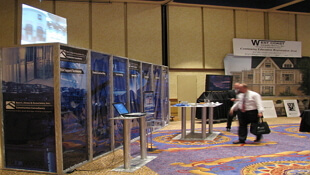
2009-With the success of the rear screen projection, BHA adds additional monitors to provide attendees with more information about BHA.
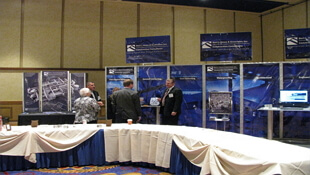
2010-BHA adds an interpretive professional development exhibit targeted to Building Envelope issues allowing adjusters and other non-construction professionals hands on access to the systems and components at the heart of many related such claims.


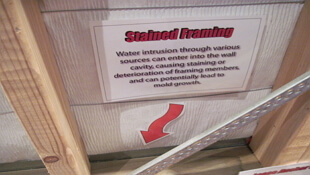
2011-BHA's Swing for Charity challenge is born.

2012-Always innovating, BHA expands its rear projection and professional development offerings to West Coast attendees.

2013-BHA showcases additional capabilities with a twenty-four foot, custom, convex, immersive video experience.

2014-BHA adds an iPhone display to give a hands-on demonstration of their data collection methods.
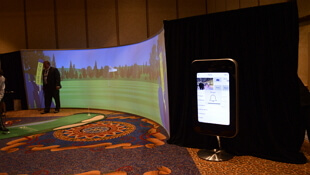
2015-BHA's twenty-four foot , custom, convex, immersive video experience was elevated with two additional rear projection screens, reflecting BHA's newest capabilities and services.

2016-BHA dazzles attendees with their new exhibit comprised of more than 15 integrated, high definition, LCD displays. iPads are stationed on tables to conveniently demonstrate BHA's data collection processes.
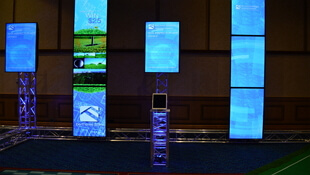
2017-BHA's Swing for Charity Golf Challenge raised $2,225.00 for the National Coalition for Homeless Veterans and $1,900 for Final Salute.
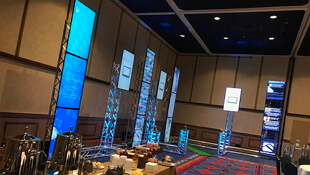
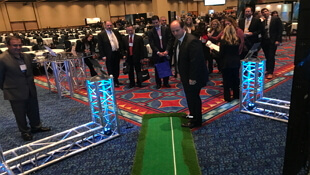
Read the court decisionRead the full story...Reprinted courtesy of
School District Client Advisory: Civility is not an Option, It is a Duty
May 13, 2014 —
Gregory J. Rolen - Haight Brown & Bonesteel LLP“I could not but wonder at the Queen’s unprecedented civility, until I realized with a flush of shame that it was my own improved behavior that motivated hers. So it is that we in life determine our own treatment.” - Catherine Gilbert Murdock
I. We Must Actively Encourage Board Civility
Over 20 years of experience representing public entities has taught me there is nothing more important than civility. On April 11, 2014, I was a featured presenter on, "How to Keep School Boards Out Of Trouble!" My initial focus was to educate the board members about open meeting laws, public records, and conflict provisions. Instead, I began by addressing board "civility." The discussion became animated. The audience was transfixed, appalled, and even amused at my examples of how uncivilized board behavior led to lawsuits, bad press, wasted resources and low morale. One attendee asked me to define civility. I meekly responded, "The Golden Rule?" "Disagreeing without being disagreeable?" My answers were inadequate. I then had a humbling epiphany. As an education law specialist, and the General Counsel of one of the largest, most diverse school districts in California, I needed to do more to foster civility among the board members I served. I had underestimated the destructive effects of incivility on my district, my colleagues, and my community.
On some level I realized that the coarsening of the discourse was taking its toll. However, I was so involved in performing my duties; I forgot to do my job. I should have taken a step back and implemented training, policies, initiatives and protocols to promote civility. I realize that it is unfortunate that we have to establish standards for adult interactions, especially for people who have promised to place service over self. As I learned, you can never fully anticipate human interactions or the complexities of the human condition. That is why I believe proactive measures to promote civility are so critical. This is not being nice for the sake of being nice. But instead, it is an absolutely vital component of effective governance. Therefore, in this essay I will discuss civility and its importance to school boards and districts. I will address the deleterious effects of board incivility. More importantly, I hope to present no-nonsense methods to cultivate civility. It is my sincere desire that others will learn from my experiences, and this time I want to do better!
Read the court decisionRead the full story...Reprinted courtesy of
Gregory J. Rolen, Haight Brown & Bonesteel LLPMr. Rolen may be contacted at
grolen@hbblaw.com
Court Again Defines Extent of Contractor’s Insurance Coverage
November 26, 2014 —
Craig Martin – Construction Contractor AdvisorThe ever changing landscape of insurance coverage for contractors continues to be clarified in Texas. The Fifth Circuit Court of Appeals applied Texas law in Crownover v. Mid-Continent Casualty Company, concluding that contractors do have insurance coverage to cover claims that a project was not constructed in a good and workmanlike manner.
In this case, the Crownovers hired a contractor to build a house. The contract contained a warranty-to-repair clause. Shortly after construction was completed, cracks began to appear in the walls and foundation, and there were problems with the heating and air conditioning system. The Crownovers demanded that the contractor repair the problems and the contractor refused. The Crownovers brought an arbitration proceeding against the contractor and prevailed, obtaining a judgment that the contractor must pay for repairs to the foundation and HVAC system. The contractor then filed for bankruptcy and the bankruptcy court allowed the Crownovers to pursue their claim against the contractor’s insurer.
Read the court decisionRead the full story...Reprinted courtesy of
Craig Martin, Lamson, Dugan and Murray, LLPMr. Martin may be contacted at
cmartin@ldmlaw.com




































































